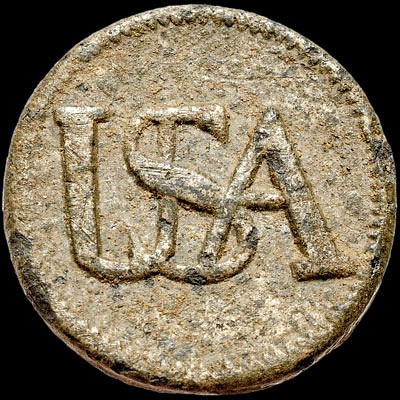1780 Revolutionary War RI Pay to Excellency William Greene Council of War Member
Lot 83
Estimate:
$400 - $500
Absentee vs Live bid
Two ways to bid:
- Leave a max absentee bid and the platform will bid on your behalf up to your maximum bid during the live auction.
- Bid live during the auction and your bids will be submitted real-time to the auctioneer.
Bid Increments
| Price | Bid Increment |
|---|---|
| $0 | $10 |
| $200 | $20 |
| $300 | $25 |
| $500 | $50 |
| $1,000 | $100 |
| $2,000 | $200 |
| $3,000 | $250 |
| $5,000 | $500 |
| $10,000 | $1,000 |
| $20,000 | $2,000 |
| $30,000 | $2,500 |
| $50,000 | $5,000 |
| $100,000 | $10,000 |
| $200,000 | $20,000 |
| $300,000 | $25,000 |
| $500,000 | $50,000 |
About Auction
By Early American History Auctions
Aug 21, 2021
Set Reminder
2021-08-21 12:00:00
2021-08-21 12:00:00
America/New_York
Bidsquare
Bidsquare : Autographs - Historic & Political Americana - Militaria & Guns
https://www.bidsquare.com/auctions/early-american-history-auctions/autographs---historic-political-americana---militaria-guns-7321
335 Lots of Rare, Historic Autographs, Americana, Civil War Era, George Washington, Revolutionary War Era, Colonial America, Federal Period, War of 1812, Colonial Currency & more... Early American History Auctions auctions@earlyamerican.com
335 Lots of Rare, Historic Autographs, Americana, Civil War Era, George Washington, Revolutionary War Era, Colonial America, Federal Period, War of 1812, Colonial Currency & more... Early American History Auctions auctions@earlyamerican.com
- Lot Description
American Revolution
Revolutionary War Rhode Island Payment to his Excellency William Greene, four days a Member of the Council of War
October 15, 1780-Dated Revolutionary War. Rhode Island Manuscript Document being a Pay Order for 120 Pounds,Signed by Governor William Greene as an attending "Member of the Council of War", Choice Very Fine.
Entirely Handwritten, this Document reads: "State of Rhode Island.... -- This Certifies that his Excellency William Greene Esqr., hath attended four days as a Member of the Council of War since the last Certificate given at thirty pounds per day which he is to be paid out of the General Treasury. Providence October 15, 1780. -- Witness, (Signed) William Mumford Clk." The back also shows a docket: "Rec'd the contents endorsement (Signed), "W.(illiam) Greene". Mumford was business partner of John Cole and later law partner of Col. Daniel Hitchcock. William Greene Jr. (1731-1809) was the second governor of the state of Rhode Island, serving in this capacity for eight years (1778-1786), five of which were during the American Revolutionary War. From a prominent Rhode Island family, his father, William Greene Sr., had served 11 terms as a colonial governor of Rhode Island. His great-grandfather, John Greene Jr. served for ten years as deputy governor of the colony, and his great-great-grandfather, John Greene Sr. was a founding settler of both Providence and Warwick.
William Greene served the Rhode Island Colony for many years as a Deputy to the General Assembly, a Justice and Chief Justice of the Rhode Island Supreme Court, and then as Governor.
Some of the events occurring during William Greene's early tenure as governor included the British sacking of the towns of Bristol and Warren on May 25, 1778, and the subsequent arrival of the French fleet on July 29, 1778 under the command of the Comte d'Estaing.
The ensuing Battle of Rhode Island on August 29, 1778 resulted in a stalemate, and the British continued to occupy Aquidneck Island. An encouraging event for the Americans, however, occurred on October 18, 1778, when the American vessel Hawk, under the command of Captain Silas Talbot, captured the British galley Pigot.
In October 1779 the British evacuated Newport, after having laid waste to this once wealthy community. The buildings of Rhode Island College (later Brown University) in Providence were used as a barracks and hospital during the latter part of the war until 1782. The most important event of 1780 was the arrival in Newport of 44 French ships under the command of Admiral De Ternay, who brought 6000 troops to serve under Count Rochambeau. Governor Greene convened a special session of the General Assembly to receive the French during this momentous occasion.
In 1781, after the surrender of Lord Cornwallis at Yorktown to French and American forces, the General Assembly changed the name of Kings County, Rhode Island to Washington County "in perpetual and grateful remembrance of the eminent and most distinguished services, and heroic actions of the illustrious commander-in-chief of the forces of the United States of America."
As the new nation was forming, in 1782 Rhode Island and Georgia were the only two states that rejected a 5% import tax proposed by congress. The Rhode Island citizenry and leadership felt that such a tax bore unequally on Rhode Island as a maritime state. This was one of several considerations delaying Rhode Island's entry into the Union. Congressional delegate David Howell was backed by a unanimous vote of the House of Deputies and by Governor Greene in rejecting the import tax.
As a Governor during the American Revolutionary War, his biggest concerns were the British sacking of the Rhode Island towns of Bristol and Warren, and the British occupation of Newport, which lasted for three years. After eight years as Governor, Greene, who supported the use of hard currency, was defeated in the May 1786 election by John Collins who was an advocate of paper money!
- Shipping Info
-
Early American provides in-house worldwide shipping. Please contact us directly if you have questions about your specific shipping requirements.
-
- Buyer's Premium



 EUR
EUR CAD
CAD AUD
AUD GBP
GBP MXN
MXN HKD
HKD CNY
CNY MYR
MYR SEK
SEK SGD
SGD CHF
CHF THB
THB













